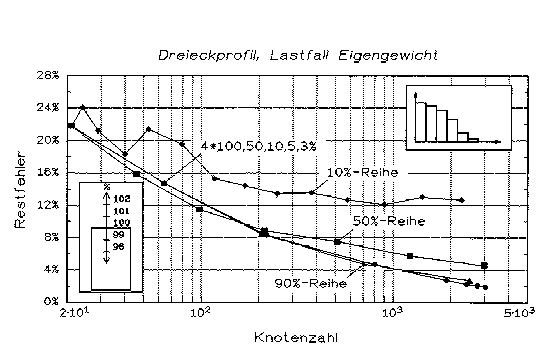Doctor thesis of M. Hoffmann
Summary
You can get the complete thesis here:
Automatic generation of FE meshes for slab constructions by example of a gravity dam
Up to the present time, finite element (FE) analyses of gravity dams have not always been performed routinely because of uncertainties and complications in practice as a result of hardware and software restrictions. FE calculations, however, are needed to get more efficient results than with classic calculation methods, especially when underground interaction has to be considered.
The purpose of this dissertation is to improve two dimensional plain strain analyses of slab constructions as needed, for example, for calculations of cross sections of gravity dams. An algorithm based on accuracy estimates is developed. It allows automatic generation and adaptive refinement of FE meshes. The refinement method uses fuzzy logic techniques. The results are more accurate and require less computer time than before. It is shown that the remaining global error estimator can be reduced to less than 1%.

Figure 1: Minimizing of global error estimator by different strategies of refinement
Some more results of this dissertation are:
- quadrilateral elements should be preferred to triangular elements,
- regular element shapes yield better results than distorted shapes,
- stresses should be calculated in FE nodes instead of element centres or Gaussian points and should be weighed with element energies.
In an application model several construction variants for the rehabilitation of a gravity dam are introduced and compared with each other. By this way, the best variant can be found in a short time.
Also computer hardware limitations for two dimensional analyses no longer exist as modern personal computers are available. So finite elements will substitute classical cantilever theory with trapezoidal stress distribution soon.
Back to Homepage

